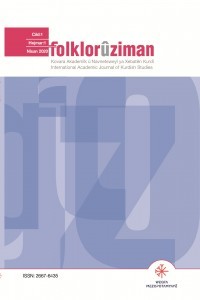Temamkirin di Kurmancîyê da: Alîyên Semantîk-Tîpolojîk, bi Perspektîfeka Herêmî
Temamkirin di Kurmancîyê da: Alîyên Semantîk-Tîpolojîk, bi Perspektîfeka Herêmî
Kurmanjî clause-linking devices are generally a) finite, and b) subject to variation in respect of the choice of morphological device that marks the link. There are several options for marking complement clauses in the language: zero-marking (paratactic apposition of clauses), mood, simple and complex complementisers, and reinforcement of subject agreement through deictics and anaphora. The paper discusses the distribution of clause-linking devices, based on their occurrence in a соrpus of tape-recorded and transcribed conversational narratives. The findings are related to the predictions on semantic-typological universale of complementation. A brief discussion of the areal position of Kurmanji follows, in conclusion of which I propose that the principal isogloss shared by the languages under discussion is their reliance on finite verbs even in the most tightly-integrated complex constructions.
- ISSN: 2667-6435
- Başlangıç: 2020
- Yayıncı: Mezopotamya Eğitim Bilim Sanat Sağlık Ve Kültür Vakfı İktisadi İşletmesi
Sayıdaki Diğer Makaleler
Temamkirin di Kurmancîyê da: Alîyên Semantîk-Tîpolojîk, bi Perspektîfeka Herêmî
Yaron MATRAS, Çevirmen: Ümran ALTINKILIÇ, Çevirmen: Sinan GÜLTEKİN
Nirxandina Pirtûka “Kûçikê Daleqandî”yê
Kitabê “Avesta Dili ile Kırmancca (Zazaca)’nın Karşılaştırılması: Etimolojik Bir İnceleme” Ser o
Nirxandina Kurteçîrokên Mela Mehmûdê Bazîdîyî yên bi Navê Durru'l-Mecalîsê
Zêmarên Kurdî yên Kafkasya û Herêma Mêrdînê: ji Hêla Teşe, Naverok û Zimanî ve
Analîza Çîroka Mihemed Begê Spîvanîyê li gor Çar Fonksîyonên Folklorê yên William R. Bascomî
